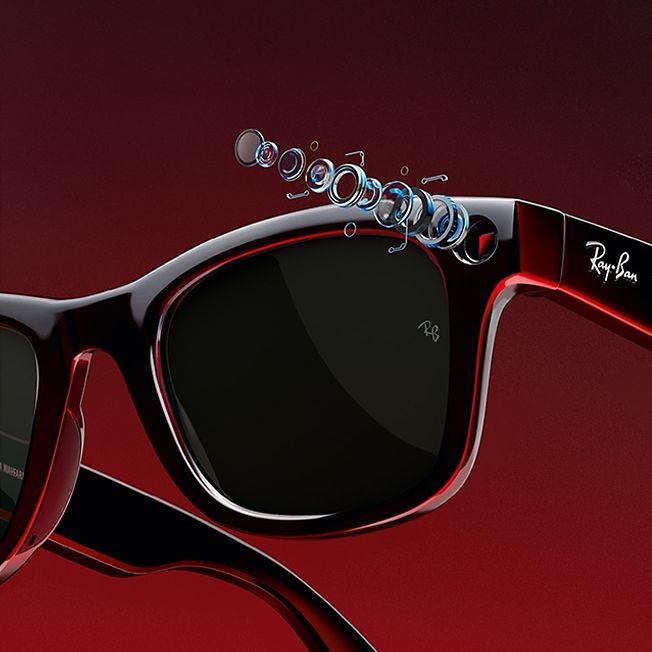
The world of wearable technology is booming, with AI glasses emerging as a frontrunner in innovation. Tech giants like Meta (formerly Facebook) and new startups like Brilliant Labs are vying for a piece of the smart glasses market, each offering unique features and functionalities.
But how do these AI glasses compare to other smart gadgets on the market? This article dives into the exciting world of AI eyewear, exploring the strengths and considerations of leading contenders.
Meta Ray-Ban Stories vs. Brilliant Frames
Let’s take a closer look at two prominent players: Meta’s Ray-Ban Stories and Brilliant Frames.
Meta Ray-Ban Stories: A collaboration between Meta and the iconic eyewear brand Ray-Ban, these smart glasses boast a sleek and familiar design. They integrate dual cameras for capturing photos and videos, and a small open-ear speaker for audio calls and music. While lacking a display, Ray-Ban Stories connect with your smartphone via Facebook Assistant, allowing for voice control of various functions.

- Brilliant Frames: Developed by Brilliant Labs, these AI glasses prioritize functionality over aesthetics. Brilliant Frames feature a microLED display for information overlay, alongside integrated translation, real-time transcription, and on-the-fly image generation capabilities.

Feature Face-Off: AI Glasses vs. Smartwatches
While AI glasses offer a novel way to interact with technology, how do they compare to established smartwatches? Here’s a quick comparison:
Functionality: Smartwatches excel at fitness tracking, notifications, and contactless payments. AI glasses, on the other hand, focus on augmented reality experiences, information overlay, and voice-controlled tasks.
Design and Comfort: Smartwatches are generally comfortable for everyday wear. AI glasses, especially those with displays, might take some getting used to in terms of weight and balance.
Privacy Considerations: AI glasses with facial recognition or recording capabilities raise privacy concerns. Users should be aware of these considerations before purchasing.
Beyond the Big Names: Exploring Other AI Glasses
The market for AI glasses is rapidly expanding. Here are some other noteworthy options:
Vuzix Blade: These high-end glasses offer a near-to-eye display for a more immersive augmented reality experience.
Nreal Air: These lightweight glasses prioritize entertainment and gaming with a focus on mobile cloud gaming.
Choosing the Right AI Gadget for You
The ideal AI gadget depends on your needs and preferences. Consider these factors:
Functionality: What features are most important to you? Do you prioritize notifications and fitness tracking, or are you more interested in augmented reality experiences and voice control?
Design and Comfort: Choose glasses that complement your style and feel comfortable for extended wear.
Privacy: Be mindful of privacy implications, especially with glasses featuring facial recognition or recording capabilities.
The Future of AI Glasses: A Glimpse Ahead
AI glasses represent a significant leap forward in wearable technology. As the technology matures, we can expect:
Advanced Displays: Improved microLED displays for a more seamless and comfortable augmented reality experience.
Enhanced Functionality: Integration with a wider range of applications and services, making AI glasses even more versatile.
Privacy and Security Advancements: Development of robust security measures and user controls to address privacy concerns.
Conclusion
AI glasses are poised to revolutionize the way we interact with information and the world around us. Whether you choose Meta’s Ray-Ban Stories, Brilliant Frames, or another option, AI glasses offer a glimpse into the future of wearable tech. Carefully consider your needs and preferences to select the perfect fit and join the exciting world of smart eyewear!
FAQs:
Are AI glasses safe to use?
As with any technology, there are potential safety concerns, especially regarding eye strain and privacy. It’s crucial to choose reputable brands and use AI glasses responsibly.When will AI glasses become mainstream?
The timeline for widespread adoption is uncertain, but advancements in display technology and user comfort are paving the way for a more mainstream future for AI glasses.












